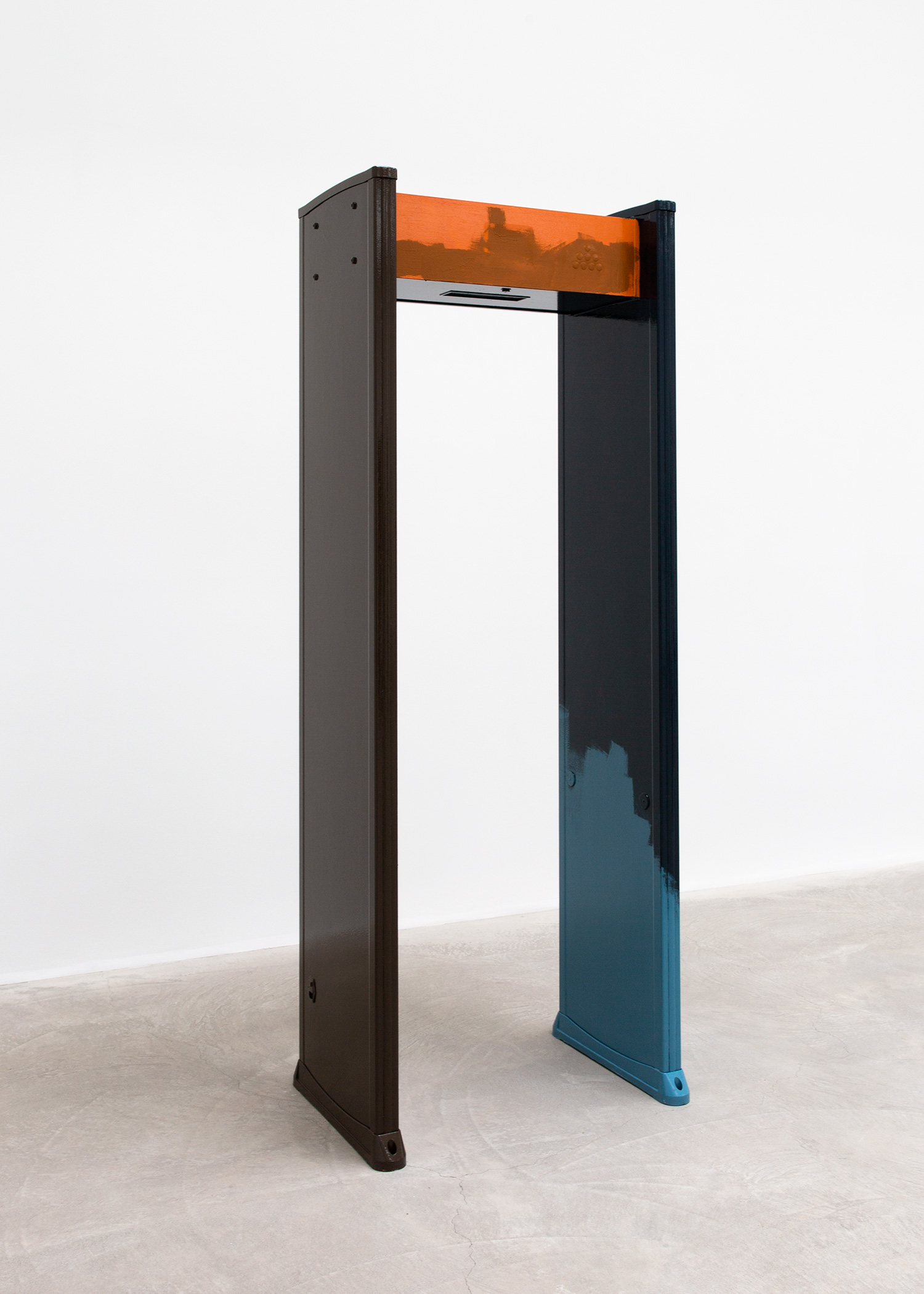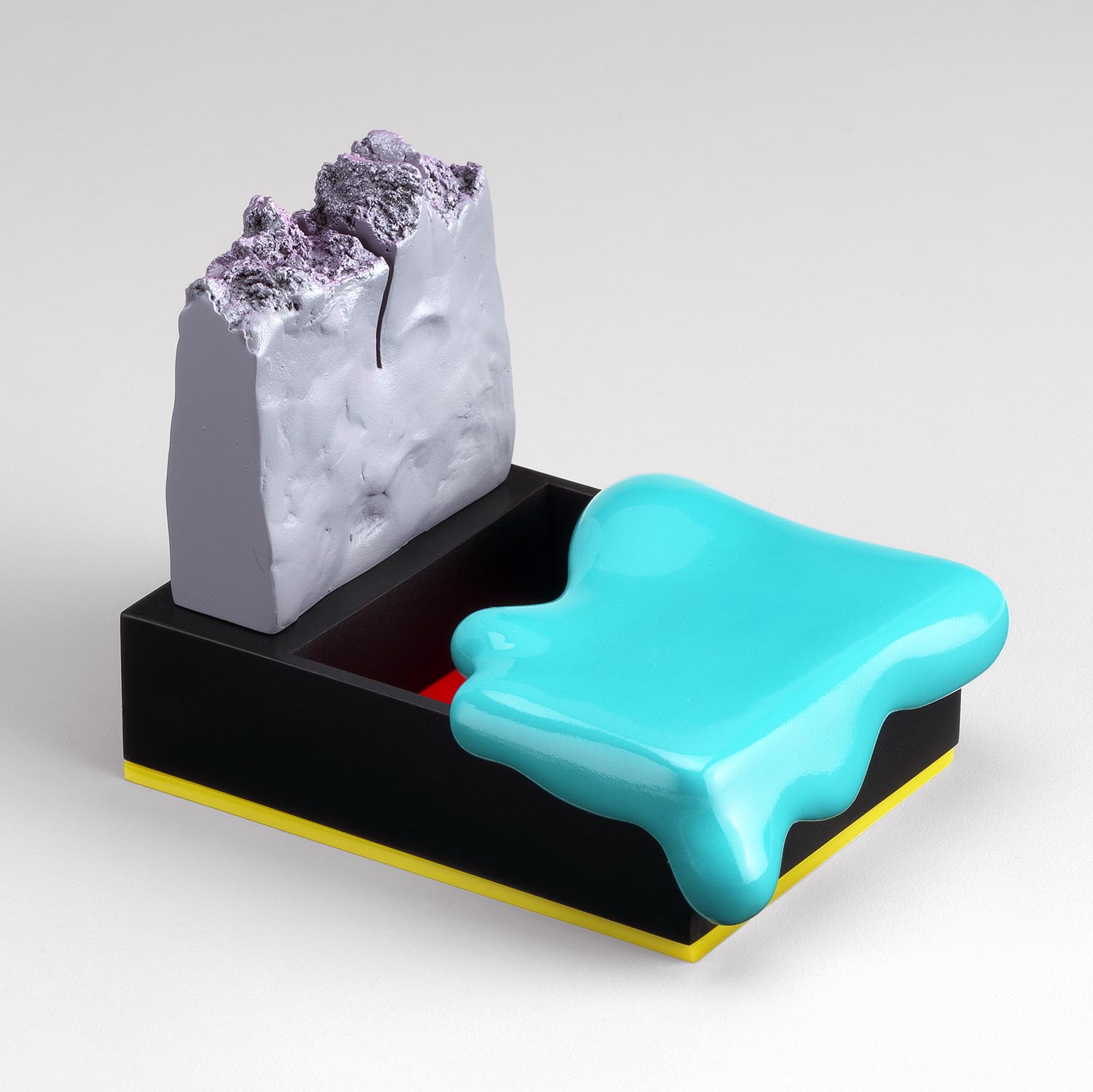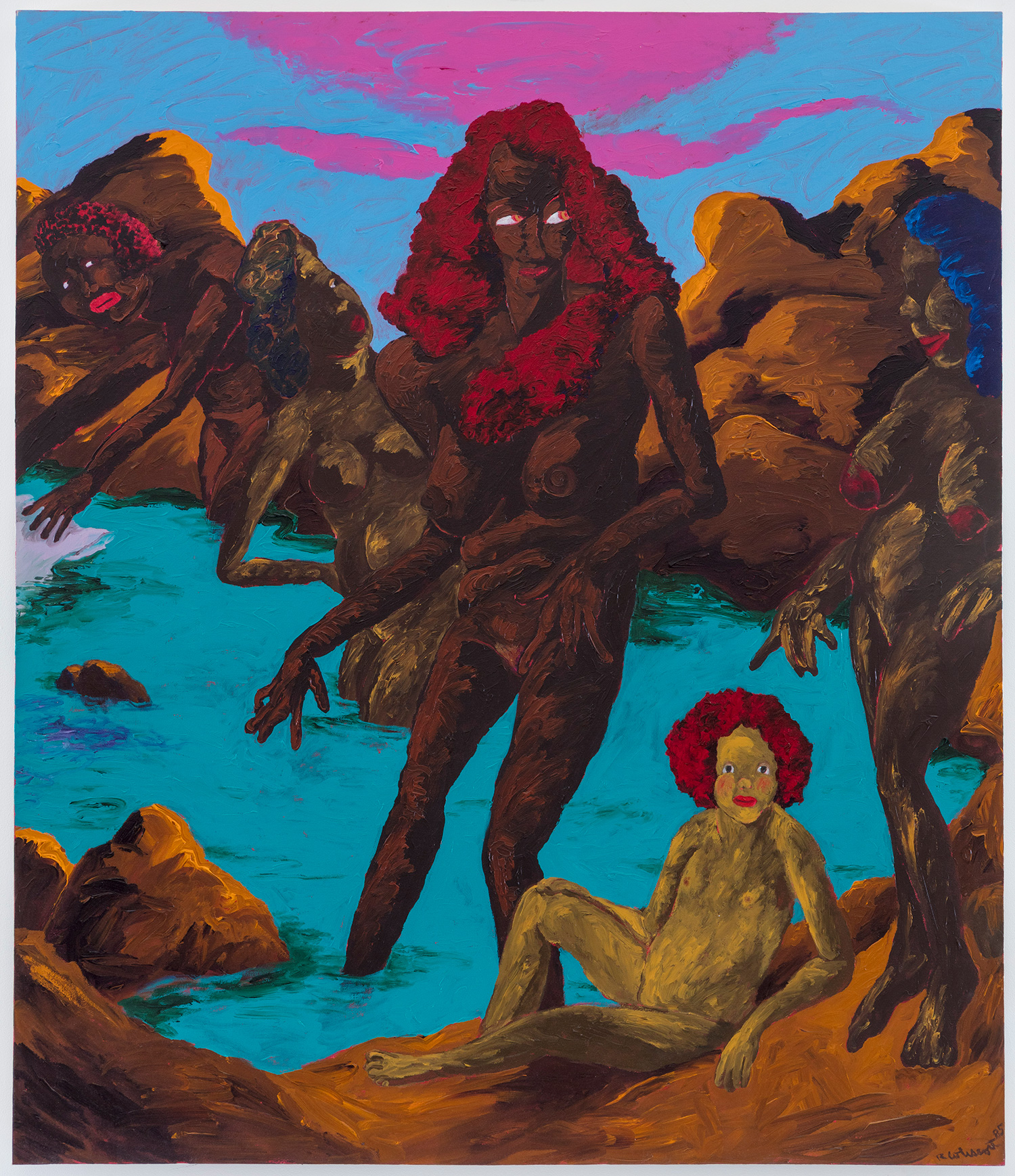Robert Gober is a God. He exults in the production and repetition of forms that he has used since the beginning of his career, now spanning over 35 years. It is this vitality that brings to mind the words of G.K. Chesterton, “…It may not be automatic necessity that makes all daisies alike; it may be that God makes every daisy separately, but has never got tired of making them.” Sympathetic objects, sculptures, drawings, wallpaper and prints, are all crafted by hand in the studio, and make up Gober’s restless infinity.
In the first gallery, two of his familiar sinks split and transform into wooden planks with the patina of porcelain and child-sized beeswax limbs are captured in their wove. Another sink, in the center, seems in the midst of replicating itself like a monumental bacterium; it elicits an erotic desire to lick its smooth contours.
In the second gallery, pastel wallpaper of states the artist has lived, or loved, adorn two walls. Red and grey studies of sculptures hang in the first room near oddly virtuous objects: a fabricated bucket of paint, a giant ear bedecked by a curled axe. Further in, a potato print of sheet music, and a small, fragile photo etching of a newspaper article hang on the walls. “Climb Ev’ry Mountain” is a song best known from a scene in the Sound of Music: Maria returns to the convent, fearful of her sexual attraction to Baron Von Trapp, and upon discovering Maria’s longing, the Mother Abbess sings. Meant to be inspiring, “[an] unexpected display of the spectacle of desire… renders the scene literally embarrassing” writes Slavoj Zizek, validating whole armies of tittering Catholic schoolchildren. On the other end of the spectrum, the newspaper fragment details the arrest of a Brooklyn man for choking his mother, and lighting her hair on fire, in their home. The methods of both of these text works contribute to their evocative dissonance, creating a frisson of hope and dread.



